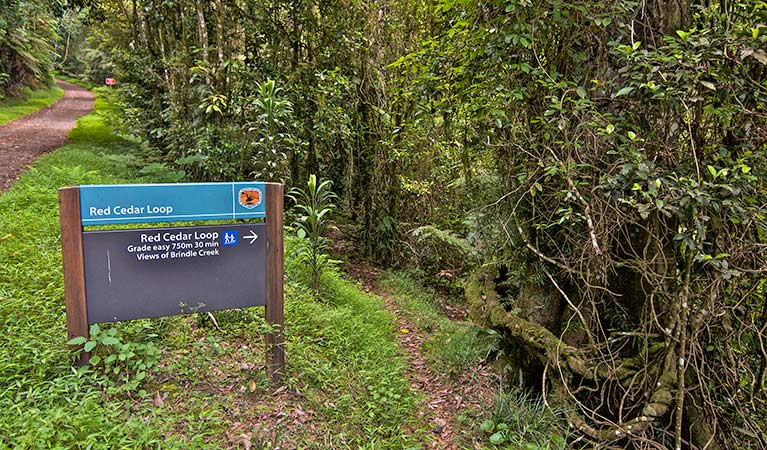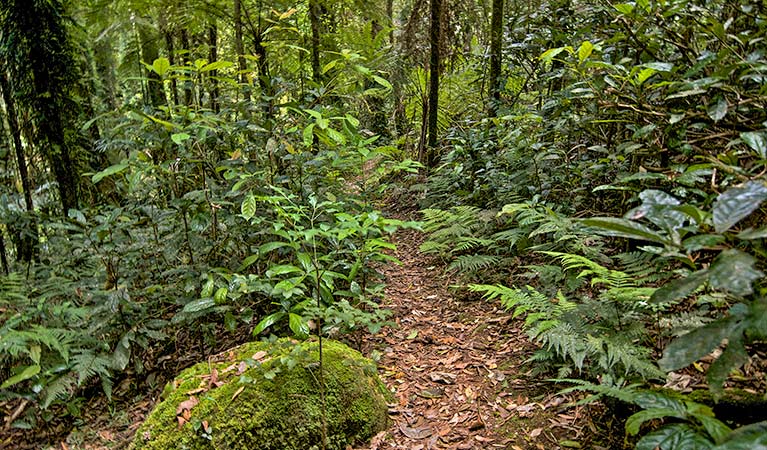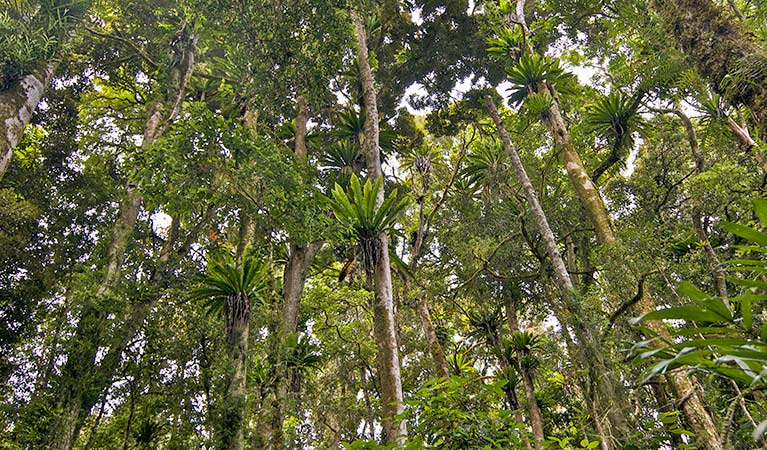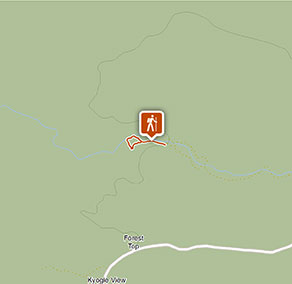Overview
Red Cedar loop, in Border Ranges National Park, is a short easy rainforest walk leading to a giant red cedar tree. There are birdwatching opportunities along the way.
- Where
- Border Ranges National Park in North Coast
- Accessibility
- Medium
- Distance
- 0.75km loop
- Time suggested
- 20 - 40min
- Grade
- Grade 2
- Entry fees
- Park entry fees apply
- What to
bring - Drinking water, hat, sunscreen
- Please note
- It’s a good idea to fill your fuel tank before heading out to the park as the closest service stations are Kyogle, Woodenbong, Nimbin and Rathdowney.
- The weather in the area can be extreme and unpredictable, so please ensure you’re well prepared for your visit.
- Remember to take your binoculars if you want to go birdwatching
Go for a wander in the bush through Red Cedar loop and be rewarded with a grand finale. The scenic walking track leads you to the foot of a 48m red cedar tree. It’s a sight to behold and possibly 1000 years old. Look for epiphytes growing on the bark, such as bird’s nest fern, orchid and staghorn.
Cedars often grow close to creek lines, which made them easy pickings for the early European settlers who used flooded creeks and rivers to float the logs down to waiting ships and saw mills. This particular one was lucky enough to not be too close to the water’s edge.
Enjoy bushwalking along the short and easy track with friends, family or take some time out alone to fully appreciate your surroundings. If Red Cedar loop whets your appetite for more walking then stretch your legs a little further to nearby Helmholtzia loop.
Take a virtual tour of Red Cedar loop captured with Google Street View Trekker.
Border Ranges 360 experiences
Discover some of the rare and remarkable animals, plants and habitats that make Border Ranges National Park special, with our interactive 360-degree images.

Big name, big aims
More than 350 Assets of Intergenerational Significance (AIS) areas have been declared in our parks as home to the most threatened animal and plant habitat, giving them extra special protections.
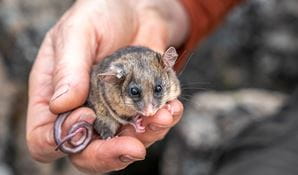
General enquiries
- National Parks Contact Centre
- 7am to 7pm daily
- 1300 072 757 (13000 PARKS) for the cost of a local call within Australia excluding mobiles
- parks.info@environment.nsw.gov.au
Park info
- in Border Ranges National Park in the North Coast region
Border Ranges National Park is always open but may have to close at times due to poor weather or fire danger.
-
Park entry fees:
$8 per vehicle per day.
Buy annual pass

